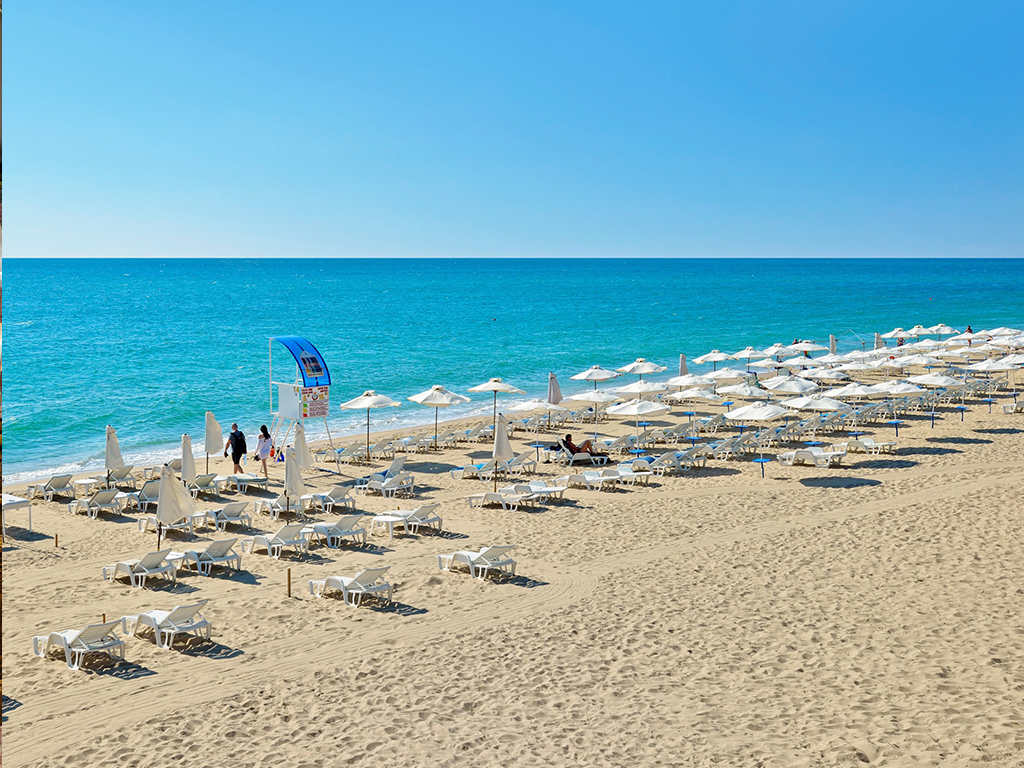
A blend of nature, history and unforgettable adventures, through this ancient Balkan Country.
The nature lovers can wonder through the high Balkan Mountains and hiking paths through the forests and forgotten villages, visit glacial lakes, or stop for birdwatching in the national parks. The winter adventures continue through the Bulgarian ski fields.
While for those who want to relax, there are long sandy beaches on the Black Sea, turquoise waters, modern resorts, Golfing fields and luxury SPA centers.
Culture and History captures the attention of every visitor, with Bulgaria’s ancient history from the Neolithic settlements, to the roman amphitheaters, ottoman architecture and Ten (10) UNESCO World Heritage Sites.
The religious art in the orthodox churches and monasteries, iconostasis, gold-domed churches and miniature icon paintings are another highlight of Bulgaria.
Bulgarian food often incorporates salads as appetizers and is also noted for the prominence of dairy products, wines and other alcoholic drinks such as rakia. The cuisine also features a variety of soups, such as the cold soup tarator, and pastries, such as the filo dough based banitsa, pita and the various types of börek.
Main courses are very typically water-based stews, either vegetarian or with lamb, goat meat, veal, chicken or pork. Deep-frying is not common, but grilling – especially different kinds of sausages – is very prominent. Pork is common, often mixed with veal or lamb, although fish and chicken are also widely used. While most cattle are bred for milk production rather than meat, veal is popular for grilling meat appetizers (meze) and in some main courses. As a substantial exporter of lamb, Bulgaria’s own consumption is notable, especially in the spring.
Similarly, to other Balkan cultures the per capita consumption of yogurt, among Bulgarians is traditionally higher than the rest of Europe.
Bulgarian cuisine shares a number of dishes with the Middle Eastern cuisine, as well as a limited number with the Indian, particularly Gujarat cuisine. The culinary exchange with the East started as early as the 7th century, when traders started bringing herbs and spices to the First Bulgarian Empire from India and Persia via the Roman and later Byzantine empires. This is evident from the wide popularity of dishes like moussaka, gyuvetch, kyufte and baklava, which are common in Middle Eastern cuisine today. White brine cheese called “sirene”, similar to feta, is also a popular ingredient used in salads and a variety of pastries.
Area: 110,994 km²
Population: 7 million (2019)
Length of borders: 2,026 km
Capital: Sofia
Currency: Bulgarian Lev (BGN)
Unemployment rate: 4.4% (Jul 2020)
Highest mountain peaks: Musala, 2925 m; the highest in the Balkans
National parks: Central Balkan National Park; Pirin National Park; Rila National Park
Climate: Temperate-continental climate with moderate features which is characteristic for Central Europe, with hot summers, long, cold winters and very distinct seasons. Abundant snowfalls may occur throughout the country from December to mid-March
Average air temperature: 11.1°C (52°F) to 29.4°C (84.9°F)
Time zone: GTM +2
Electrical power system: 220V/50Hz
Bulgaria languages: Bulgarian
Bulgaria religions: Eastern Orthodox Christianity
The most beautiful places in Bulgaria:
